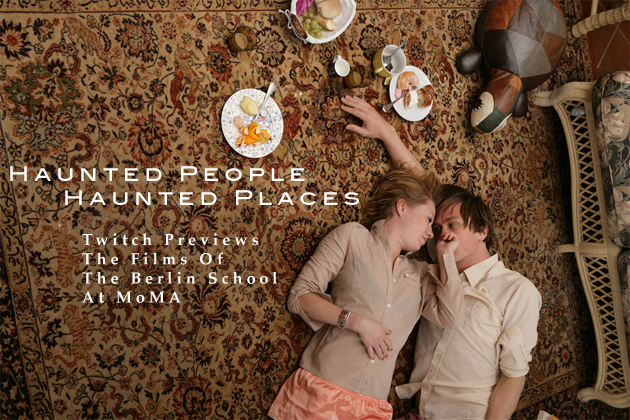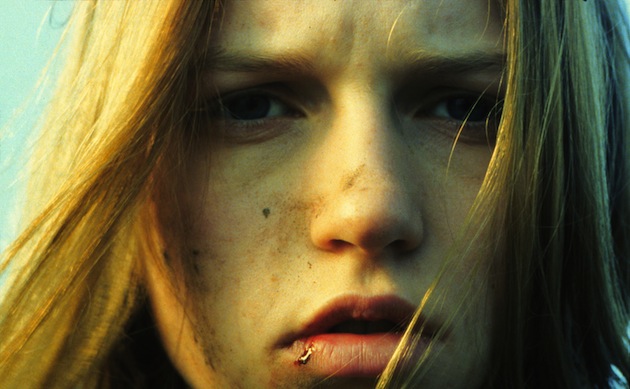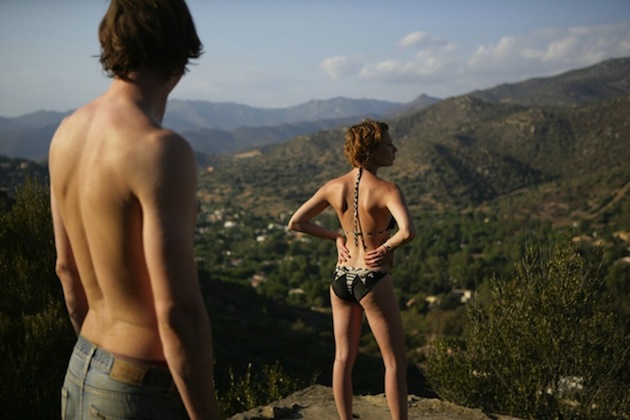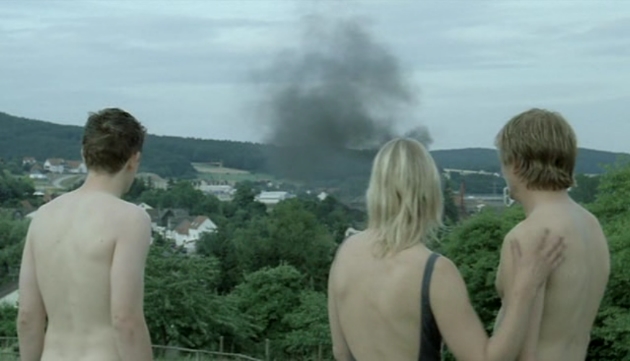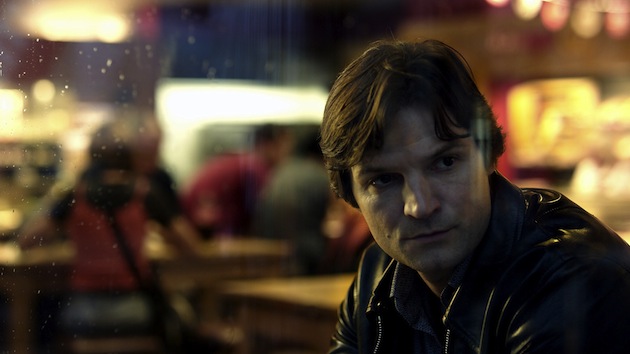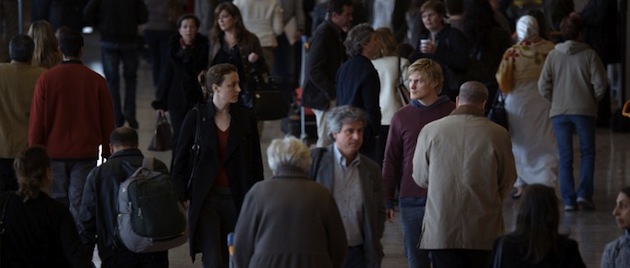Haunted People, Haunted Places: The Films Of The Berlin School At MoMA
Despite having one of the richest and most influential cinematic histories of any nation, current German cinema's star rarely shines beyond its borders. The films that make the rounds and get the spotlight or any awards attention are the ones that still usually ponder over the corpse of Nazism or chronicle the time of a Germany divided by the Iron Curtain. No doubt, there are compelling and important works to come from these still intriguing subject matters, but what of the Germany after the fall of the Berlin wall? Though only a handful of the films have made it out of German theaters and the international festival circuit, there has in fact been a bright new wave of German cinema to mirror that of the 1970's vibrancy and brilliance. And it all starts at the dffb (Deutsche Film- und Fernsehakademie Berlin) and with three graduates from the early 1990s: Christian Petzold, Angela Schanelec and Thomas Arslan.
Considered the key players in a movement which would later be dubbed by critics and academics as the Berlin School, Petzold, Schanelec and Arslan began exploring and questioning their Germany; a contemporary Germany now unified, but haunted and fragmented by its checkered past. Petzold's earlier works were pulp-inspired thrillers (Die Beischlafdiebin), while Schanelec's gaze was more on young couples and artists (I Stayed In Berlin This Summer), and Arslan explored the young Turkish-German population (Brothers And Sisters). The directors continued to do some of their best work from these perspectives with, respectively, Jerichow, Marseille, and Dealer, but continued to expand in other directions. And to be sure, the Berlin School is not a dogme 95 style movement with certain aesthetic rules or content markers, but an umbrella term for a loose collection of filmmakers, many who got their start at the DFFB.
If there has been a typical Berlin School film over the past 15 or so years, these would be defined as meditative works on post-wall Germany with echoes of genre that are politically and socially minded pictures mostly absent of rhetoric. Characters, many of them youth or members of young families or couples, wander the unified Germany, or into neighboring countries, lost like apparitions on the plain, searching for a cause, searching for an identity; a self that can define their future as much as their present. It has been my summation over the last two years of watching these films that the Berlin School is, for the most part, a cinema of haunted people in haunted places. Of course I don't mean this in a supernatural way, but more in how these people encounter the specter of society, of expectation, of a past and of a place that is foreign and yet uncannily something you came from. If anything, many of these films show how the present can prove strangely illusive and hard to distil.
With both Petzold and Arslan now having made period films (Petzold's Barbara takes place in 1980 East Germany, while Arslan's Gold is a 1890s western) can we say that the Berlin School, as it has been charted up to this point, is dead? Or is it now merely a reflection of a much larger wave that isn't really all that defined by time and place and subject, nor by where the actual films are being made. If anything many Berlin School filmmakers penchant for naturalism, socially minded and socially impactful storytelling, and long shot/long take aesthetic has arguably been at the core of so called "art house" European and Asian cinema for decades. So why then has the Berlin School New Wave been so captivating to those that have been caught up in it? A short answer is that while the films' identity crises are unquestionably German, which makes them indubitably fascinating in their own right, many of these characters' experiences are universal in nature, and could thus, apply to most developed nations experiencing cultural and economic upheavals in the 21st century.
Starting November 20th and running til December 6th, The Museum Of Modern Art in New York City will be looking at 17 films that have operated under the moniker of the Berlin School. On November 22nd and 23rd, a symposium will take place with Petzold, Schanelec and Arslan, as well as filmmakers Benjamin Heisenberg (The Robber), Christoph Hochhäusler (I Am Guilty) and Ulrich Köhler (Bungalow), plus cinematographer Reinhold Vorschneider (In The Shadows, Marseille), and the Berlin School's very own poster child, actress Nina Hoss, who has starred in half a dozen films within the movement.
Dustin Chang and I bring to you this precursor to the series, which highlights some important works and figures in the movement as well as some personal favorites. Click through the header picture to read on!




-thumb-80x80-43717.jpg)


Considered the key players in a movement which would later be dubbed by critics and academics as the Berlin School, Petzold, Schanelec and Arslan began exploring and questioning their Germany; a contemporary Germany now unified, but haunted and fragmented by its checkered past. Petzold's earlier works were pulp-inspired thrillers (Die Beischlafdiebin), while Schanelec's gaze was more on young couples and artists (I Stayed In Berlin This Summer), and Arslan explored the young Turkish-German population (Brothers And Sisters). The directors continued to do some of their best work from these perspectives with, respectively, Jerichow, Marseille, and Dealer, but continued to expand in other directions. And to be sure, the Berlin School is not a dogme 95 style movement with certain aesthetic rules or content markers, but an umbrella term for a loose collection of filmmakers, many who got their start at the DFFB.
If there has been a typical Berlin School film over the past 15 or so years, these would be defined as meditative works on post-wall Germany with echoes of genre that are politically and socially minded pictures mostly absent of rhetoric. Characters, many of them youth or members of young families or couples, wander the unified Germany, or into neighboring countries, lost like apparitions on the plain, searching for a cause, searching for an identity; a self that can define their future as much as their present. It has been my summation over the last two years of watching these films that the Berlin School is, for the most part, a cinema of haunted people in haunted places. Of course I don't mean this in a supernatural way, but more in how these people encounter the specter of society, of expectation, of a past and of a place that is foreign and yet uncannily something you came from. If anything, many of these films show how the present can prove strangely illusive and hard to distil.
With both Petzold and Arslan now having made period films (Petzold's Barbara takes place in 1980 East Germany, while Arslan's Gold is a 1890s western) can we say that the Berlin School, as it has been charted up to this point, is dead? Or is it now merely a reflection of a much larger wave that isn't really all that defined by time and place and subject, nor by where the actual films are being made. If anything many Berlin School filmmakers penchant for naturalism, socially minded and socially impactful storytelling, and long shot/long take aesthetic has arguably been at the core of so called "art house" European and Asian cinema for decades. So why then has the Berlin School New Wave been so captivating to those that have been caught up in it? A short answer is that while the films' identity crises are unquestionably German, which makes them indubitably fascinating in their own right, many of these characters' experiences are universal in nature, and could thus, apply to most developed nations experiencing cultural and economic upheavals in the 21st century.
Starting November 20th and running til December 6th, The Museum Of Modern Art in New York City will be looking at 17 films that have operated under the moniker of the Berlin School. On November 22nd and 23rd, a symposium will take place with Petzold, Schanelec and Arslan, as well as filmmakers Benjamin Heisenberg (The Robber), Christoph Hochhäusler (I Am Guilty) and Ulrich Köhler (Bungalow), plus cinematographer Reinhold Vorschneider (In The Shadows, Marseille), and the Berlin School's very own poster child, actress Nina Hoss, who has starred in half a dozen films within the movement.
Dustin Chang and I bring to you this precursor to the series, which highlights some important works and figures in the movement as well as some personal favorites. Click through the header picture to read on!
Dustin Chang
contributed to this story.




-thumb-80x80-43717.jpg)



Do you feel this content is inappropriate or infringes upon your rights? Click here to report it, or see our DMCA policy.


